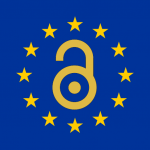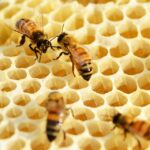This week, we highlight the upcoming Open Pharma Satellite Symposium at ALPSP 2022. We read about the problems with the peer review system, and the growth of open science policies in Kenya. We also hear about the Diamond Open Access Conference in Croatia, the new partnership between PLOS and the OA switchboard, and Clarivate’s announcement that more journals are to receive impact factors. Finally, we share a webinar on translating open science materials into non-English languages, and a podcast discussing the first German open science festival.
To engage with:
Open Pharma Satellite Symposium places are filling up fast! via Open Pharma
There is still time to confirm your place at the Open Pharma Satellite Symposium: Who can we trust? Open science and pharma research. The symposium is taking place at 10:00–12:30 BST on 14 September 2022, just before the Association of Learned and Professional Society Publishers (ALPSP) Annual Conference and Awards 2022 in Manchester, UK. Check out the programme and register here to secure your place before it’s too late!
The Diamond Open Access Conference via The Committee for Open Science | 1-minute read
Following the presentation of their action plan to strengthen Diamond Open Access publishing, Science Europe, cOAlition S, OPERAS and the French National Research Agency have announced the Diamond Open Access Conference. This conference will take place on 19 and 20 September 2022 in Zadar, Croatia, and in a hybrid format to allow for remote participation. The draft programme for the event can be found here.
To read:
How do you solve a problem like peer review? via The Conversation | 5-minute read
Although critical for the scrutinizing and publishing of research, the peer review process is broken and in dire need of fixing. This is the opinion of the authors of this article posted on The Conversation. The authors describe peer review as a “slow, opaque and cliquey” process that relies on unpaid work by already busy academics. In this article, they outline some of the main challenges of contemporary peer review, such as exploitation, the lack of transparency and the slow pace of review. They also discuss potential solutions to these problems, most of which were obtained from a crowd-sourced discussion on Twitter. The full findings from this crowd-sourced Twitter survey are published here.
Kenya believe it: open science growth in Kenya via ORCiD | 2-minute read
The amount of scientific research coming out of Africa has been steadily increasing over recent years. Since 2018, African researchers have published over 400 000 publications, with 50% of these being open access. However, more could still be done to increase the rate of African open access publishing. The adoption of ORCiD by the National Commission for Science, Technology and Innovation (NACOSTI) in Kenya may be one such step in the right direction. NACOSTI provides research licensing, registration and accreditation for Kenyan institutes. By integrating ORCiD into NACOSTI policy, it is hoped that ORCiD use will increase amongst Kenyan researchers, allowing for better open science and data sharing practices.
New partnership between PLOS and the OA Switchboard via PLOS | 2-minute read
In 2018, PLOS was involved in a working group to support the movement towards open access publishing, the result of which was the launch of the OA Switchboard by the Open Access Scholarly Publishing Association. Now, PLOS and the OA Switchboard have agreed a partnership that will allow PLOS to improve the management of its open access publishing agreements with institutions and to provide greater transparency and metadata to stakeholders.
More journals to gain impact factors via The Scholarly Kitchen | 15-minute read
The Web of Science Core Collection contains over 21 000 journals and consists of the Science Citation Index Expanded (SCIE), the Social Sciences Citation Index (SSCI), the Arts and Humanities Citation Index (AHCI) and the Emerging Sources Citation Index (ESCI). Up to 2022, only SCIE and SSCI journals received impact factors. However, Clarivate Analytics have announced that, beginning in 2023, AHCI and ESCI journals will also receive impact factors and be included in the Journal Citation Reports. This article, by Angela Cochran, discusses what this means for AHCI and ESCI journals and the current landscape of impact factors.
To watch:
Lost in translation: translating open science guides via Center for Open Science | 60-minute watch
One of the cornerstones of global open science is diversity. For true diversity within open science, researchers must have access to resources and materials in their native languages. The Open Science Framework (OSF) has now begun to translate their guides into an expanding number of non-English languages, including Chinese, Portuguese and Spanish. To discuss the importance of translating OSF guides, The Center for Open Science hosted a webinar on 20 July 2022. The webinar panel consisted of experts within the open science community, including Nestor Armando Nova Arévalo, Anabel Belaus, Rafael Gonzalez and Felipe Vilanova. You can find more resources from the OSF here, and if you are interested in becoming an open science translator, you can register your interest here.
To listen to:
Discussing the first German Open Science Festival via Technische Informationsbibliothek | 30-minute listen [in German]
On 30 and 31 August 2022, the first ever German Open Science Festival will take place at the Welfenschloss of Leibniz Universität Hannover in Hannover. In this episode of the The Future is Open Science podcast, Lambert Heller, Head of the Open Science Lab at Technische Informationsbibliothek, discusses the goals, role models and features of the upcoming festival. You can listen to the podcast here (NB the podcast is in German).
Have you seen our recent commentary about user perspectives on plain language summaries? Read it here in Current Medical Research and Opinion.






